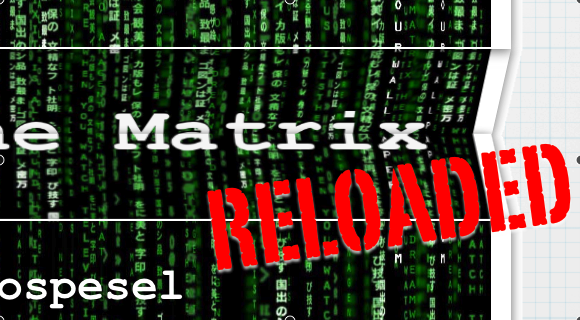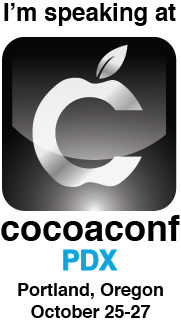I am proud to announce that I will be presenting at CocoaConf PDX in Portland, OR this October. I’ll be debuting a new talk on something I can’t talk about quite yet. But it’ll be about something new and fun to play with for you to create great interfaces for your users.
Update: Now that the NDA on iOS 6 has been dropped, I can reveal that my new talk will be on UICollectionViews.
Title: Introducing Collection Views
Abstract: UICollectionView, introduced in the iOS 6 SDK, is Apple’s new class for visualizing data in a grid or really any format other than a vertical list. We’ll cover the basics and then explore the intricacies of UICollectionViewLayout, UICollectionViewFlowLayout and related classes. Along the way we’ll learn how to make both horizontal and vertical grids, cover flow, iPhoto-like stacks, and other custom layouts. Apple has provided yet another tool that makes it easier and faster for you to provide rich experiences for your users – come learn how to hit the ground running with UICollectionView. Plenty of source code will accompany the talk.
I’ll also be giving my matrix transformations talk, which now has even more rotational and graphical goodness. That one is a longer session, so there will be plenty of time to get into all the minutiae of shadows, timing curves, anti-aliasing, rendering layers as bitmaps, etc. If you’re interested in either FlipBoard-style page-flipping animations or Clear-style folding animations, then you won’t want to miss this session.

Title: Enter The Matrix: Reloaded
Abstract: Matrix transformations can make your user interfaces come to life: translate, scale, and rotate. Each on its own is relatively simple and straightforward. Yet many developers are daunted when 2 or more operations need to be combined. What if you need to rotate or zoom about an off-center (or even off-screen) point? How do you combine multiple transformations into a single animation? How do you make advanced, polished 3D animations such as folding and flipping views? Learn everything you need to know to get started with complex matrix transformations in CoreGraphics and CoreAnimation and take an in-depth look at folding and flipping animations. We’ll also cover related topics such as anti-aliasing, avoiding off-screen render passes, shadows, and rendering retina images. Tons of demos and full open-source source code provided.
I’m super excited to visit Portland and looking forward to Chris Adamson‘s Core Audio Workshop. There’s even a place where you can get bacon on maple-frosted pastries.

Early Bird registration ends Sept 14th.

